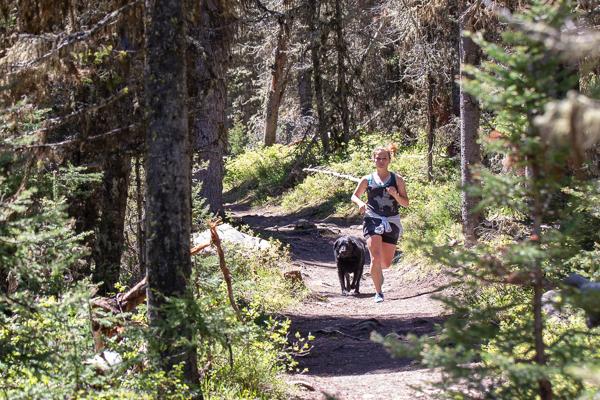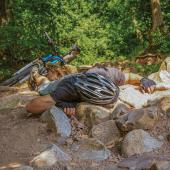Readiness Rules for Spring Activity
Getting back into step for spring.
As an orthopedic surgeon here in Bozeman, I have the opportunity to see a variety of patients with a plethora of different problems. Every spring it’s the same old thing. The office fills up with new injuries as the local population puts the skis and boards to bed and takes up spring sports. Whether these injuries are from discrete trauma or repetitive stress, they can slow down your spring fun and keep you inside when everyone else is coming out of hibernation.
Sports-related injuries in the spring are due to a number of factors. Most importantly, when we switch activities with the change in season, we often utilize muscles, tendons, and ligaments that have not been used for a while. These structures are out of shape and easily injured if we are not careful. Remember how fatigued those December legs were after skiing last year? Well, the same thing happens in the spring.
Here are four simple rules to keep in mind as you get in shape and avoid injury this spring.
Rule #1: Check your gear
Bad gear leads to injury. From bike to boot, if it’s worn out or poorly adjusted, the risk of injury greatly increases. Having quality shoes in good condition is extremely important for avoiding injury. Shoes do wear out. Experts often disagree, but somewhere around 500 miles or 12 months of use, running shoes should be replaced. The same goes for tennis, basketball, and hiking shoes. If your shoe gear is in poor condition, the risk of foot injury is increased. These injuries include stress fractures, metatarsalgia, plantar fasciitis, and Achilles tendonitis. Quality shoe gear with good arch support can take stress off these problem spots and help to avoid injuries.
Rule #2: Advance slowly
Last summer you hiked 15 miles… no problem. That was then. To avoid injury now, start back slowly. Too much stress, too fast, leads to overuse injuries. These injuries include tendonitis, fasciitis, and stress fractures, and can set you on the sidelines for the rest of the spring. When starting out in the spring, begin impact exercise gradually. If possible, even before it warms up, you can start impact exercise in the gym by utilizing the treadmill or taking aerobic classes involving stepping or jumping movements. Once you do get out, tackle hill work slowly. Your bones, tendons, and ligaments are dynamic structures and strengthen with activity. This way your body will already be prepared for your spring activities and more easily avoid injury.
Rule #3: Make sure your legs are strong
For example, the ankle is stabilized by dynamic as well as static structures. The main static stabilizers are the ankle ligaments. These include the anterior talofibular ligament, the calcaneofibular ligament, and the deltoid ligament. The main dynamic stabilizers in the ankle are the peroneal tendons. If these tendons are out of shape the ankle can become functionally unstable, increasing the risk of injury. These injuries include ankle sprains, tendon injuries, or even fractures of the tibia or fibula. One way to avoid injury is to make sure that the peroneal tendons are strong and in shape. This is most easily achieved by everting the foot against resistance provided by large rubber bands called therabands.
Rule #4: Stretch
Tendons and ligaments are mainly type-I collagen fibers surrounded by a mesh of loose connective tissue. These structures can shorten with exercise, increasing the risk of injury. Although there is some controversy about stretching, it is clearly beneficial in the foot and ankle for avoiding injury and painful conditions like plantar fasciitis. Spend a few minutes stretching before and after athletic activity. To stretch out your Achilles tendon, two muscles must be stretched: the gastrocnemius and the soleus. Plant your foot 18-24 inches away from the wall and lean against the wall, leaving your heel planted. Hold this stretch for about a minute. This stretches the gastrocnemius muscle. To stretch the soleus, bend your knee and continue to stretch for another 60 seconds.
As the weather starts to warm and your activity level increases, by following these simple rules you can prepare for spring activities and avoid injuries. Remember, life happens… so play by the rules and have fun.
Jon Robinson, M.D. has been practicing orthopedic surgery in Bozeman since 2001. He has a special interest in treating foot and ankle sports-related injuries. Jon and his wife Kristen thoroughly enjoy the Montana outdoors and ski whenever possible at Bridger Bowl.











